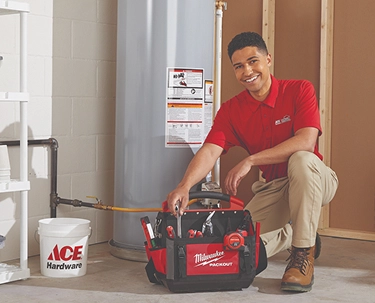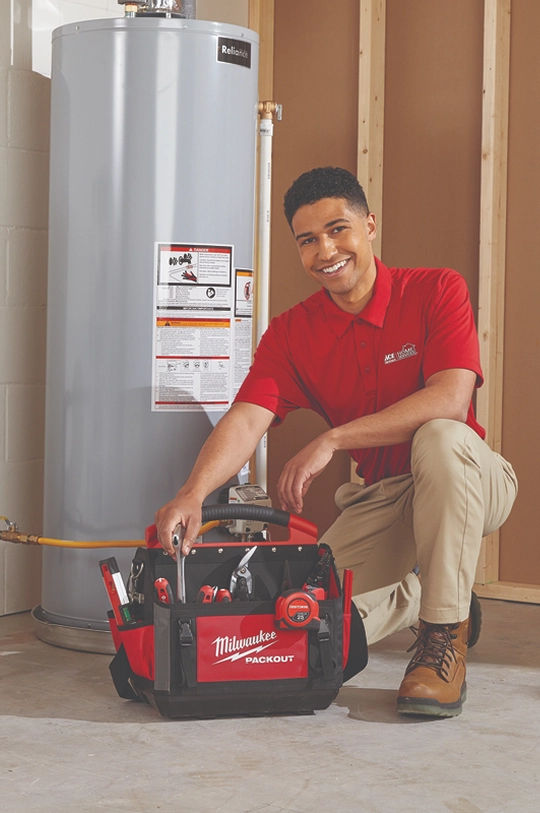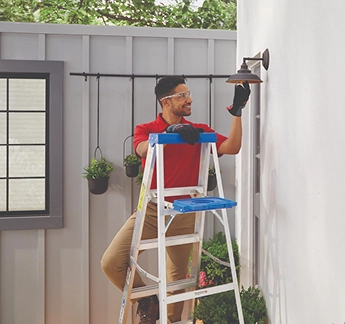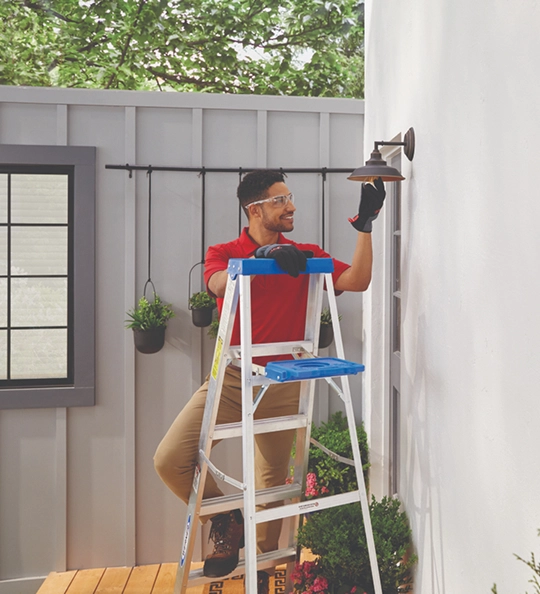
With so many different options available for cooling your home, picking the best home cooling system is not exactly easy. Each cooling system has its own advantages and disadvantages, but it can be overwhelming to decide which solution is best for your home and lifestyle. To help guide you through this decision-making process, we’ve put together a breakdown of the different cooling solutions to help you make the best choice about which system is right for you.
Summary of Cooling Systems Comparison
Here’s a quick summary of our home cooling systems comparison help you pick which one is right for your home.
Traditional Central Air
Due to their effectiveness, efficiency, and long lifespan, traditional central air conditioning systems are one of the most popular choices in residential cooling.
However, central air does require regular maintenance, and can be expensive to install, especially if new ductwork is required.
Quick Facts:
- Average Installation Cost: $6,500-$15,000
- Average Lifespan: 10-20 Years
Ductless Mini-Split
Due to their effectiveness, efficiency, and long lifespan, traditional central air conditioning systems are one of the most popular choices in residential cooling.
However, central air does require regular maintenance, and can be expensive to install, especially if new ductwork is required.
Quick Facts:
- Average Installation Cost: $6,500-$15,000
- Average Lifespan: 10-20 Years
High Velocity System
Similar to ductless systems, high velocity systems are great for smaller, or historic homes with limited space for ductwork. High velocity ductwork can be “woven” through the house to ensure whole home cooling without sacrificing living space.
However, high velocity systems do require ductwork (small-ducts) and have a significant upfront investment.
Quick Facts:
- Average Installation Cost: $20,000-$40,000
- Average Lifespan: 10-15 Years
Electric Heat Pumps
An ideal option when natural gas is not available. Heat pumps are available in a wide range of efficiency levels, making them a perfect application for someone who wants to get away from fossil fuels.
However, with limited capacities and regular maintenance needs, it’s important to select the correct pump to fit your circumstances.
Quick Facts:
- Average Installation Cost:
- Standard System: $8,500-$20,000
- Ductless System: $4,500 and up
- Average Lifespan: 10-15 Years
Geothermal Heat Pumps
Geothermal heat pumps are one of the most efficient home cooling systems because they harness the earth’s natural temperature to both heat and cool a home.
With this said, the initial investment in a Geothermal system is significant. Between the HVAC portion of the project and the site drilling, this is a project that will require substantial planning to ensure proper installation and performance.
Quick Facts:
- Average Installation Cost: $40,000 and up
- Average Lifespan: 20 Years
Factors to Consider When Choosing a System
These are the key factors we will highlight for each cooling system.
Operating Efficiency
When comparing cooling systems for your home, one of the most important factors to consider is the efficiency of the system. The higher the efficiency, the more effectively the unit will cool your home without negatively affecting your utility bill. Small differences in operating efficiency can cause large cost differences in the long-run.
Installation Cost
Second to efficiency, the other most important aspect to consider when looking into home cooling systems is the installation cost. In this section, we cover how much each system, on average, costs to be installed.
Convenience
In the convenience section of each home cooling system, we discuss the average lifespan of the system, the required maintenance, which includes how often the unit needs to be serviced, and the accessibility (and cost) of the fuel required to run the system.
Aesthetics
Lastly, in the aesthetics section of each home cooling system, we cover the look and sound of each system. While this section may not be as important as the others, these are still influential factors to consider. If you are installing the system near your newborn baby’s bedroom, you probably don’t want a noisy system.
Home Cooling Systems Comparison
Traditional Central Air Conditioning
If you are looking for a system to cool your entire home, central air conditioning is most likely your best option.
One of the most common home cooling systems, traditional central air conditioning is also considered one of the more cost-effective HVAC systems.
How does it work?
A traditional central air conditioning system cools your home by treating the air at a central location (the evaporator coil), which dehumidifies the air. The “treated” air is then distributed through the home by ductwork.
There are two types of traditional AC systems: standard central air and packaged central air.
Standard Central Air Conditioner
In a standard central air conditioner, an outdoor metal cabinet contains the condenser coil and compressor, and an indoor cabinet contains the evaporator coil. The air conditioner’s evaporator coil is the main component in conditioning the air throughout the home.
Packaged Central Air Conditioner
In a packaged central air conditioner, the evaporator, condenser, and compressor are all located in one cabinet, which usually is placed on a roof. From the roof, the ductwork will navigate the house. Package units are an alternative to traditional systems when there is no ground level space for a condenser. These are most common in cities when outdoor space is unavailable.
Advantages of a Traditional Central Air Conditioning System
- Traditional central air systems are generally very efficient and help lower humidity in the house.
- The system is virtually invisible, apart from an outdoor unit.
- Can add value to your home.
Disadvantages of a Traditional Central Air Conditioning System
- The installation cost of the system is moderately high, especially if there is no existing ductwork.
- Traditional central air systems require annual maintenance, plus, the air ducts should be cleaned every 3-5 years.
Due to the nature of the system, ductwork is required, making the installation of this system a little more substantial. If your home does not already have ductwork, construction of the ducts will increase the time and cost of install of this system.
Traditional Central Air Efficiency
Traditional central air systems are very efficient, as long as they are properly maintained. Combined with a smart thermostat, traditional systems can help lower utility bills during peak summer run times.
Traditional Central Air Installation Cost
The cost of installing a traditional AC system is dependent on which system you choose and whether or not you already have ductwork in your home, but usually ranges from $6,500 to $15,000.
Convenience of Traditional Central Air
Regular servicing of central air systems is a must. Fan blade deterioration, dirty indoor and outdoor coils, and low refrigerant levels are just some of the concerns for a central air conditioning system that isn’t regularly maintained. Annual maintenance will help to both maximize the efficiency and extend the lifespan of your system.
Lastly, the lifespan of a central air conditioner system is about 15 to 20 years, so as long as you keep up with regular maintenance checks, you shouldn’t have to worry about replacing the system for about two decades.
Traditional Central Air Aesthetics
Traditional AC systems are considered a more aesthetically pleasing option as it’s virtually invisible inside the home. In addition, since the condenser sits outside the home, traditional central air conditioning systems are not considered a loud home cooling system.
Learn More About Traditional Central Air Conditioning or
Schedule an In-Home Consultation
Learn more about traditional central air conditioning to see if this system is right for your home.
Ductless Mini-Split System
Ductless mini-split systems are an ideal solution for homes with restrictions, such as older homes with limited space for ductwork, or homes that don’t already have ductwork installed. Additionally, ductless systems can be up to 40% more efficient than conventional HVAC.
As the name suggests, ductless mini-split systems don’t require your home to have ductwork. So if your home is older, or has limited space, making it difficult, or even impossible to install ducts, you should consider a ductless system. Ductless systems are very efficient and allow homeowners to “zone” their homes. Ductless units are a great room to room solution. Withthis said, with proper design, they can also provide cooling throughout the entirety of any home.
Ductless Systems are perfect for:
- Historic homes with limited space for ductwork
- Homes with limited outdoor space for placing central air units
- Homes without ductwork already installed
- Supplemental cooling of additions, sunrooms, newly finished basements, or bedrooms
How does it work?
An electric ductless system is comprised of a small outdoor unit, and one or more indoor units that can be mounted throughout the interior of the home. It delivers air directly to different zones in your home through a small conduit that connects the indoor and outdoor units.
Because ductless systems use individual units, it allows you to control each zone in your home independently and turn off zones that are not in use, which makes it a flexible and cost-effective solution to replace electric baseboard heaters and inefficient window units.
Ductless System Efficiency
Ductless systems are one of the most efficient home cooling systems. Because ductless air conditioners operate without bulky ductwork, they are less susceptible to leaks that account for up to 30% of energy consumption in traditional systems. This makes mini split systems up to 40% more efficient than conventional HVAC.
However, when talking efficiency, it’s extremely important to get the correct size mini split model for your home. If a unit is oversized or poorly located within a home it can result in short cycling, which drastically decreases a system’s efficiency. If the unit is undersized, it will strain to cool your home properly.
Ductless System Installation Cost
The cost of installing a ductless mini-split system is dependent on a number of variables including how many units you are installing and what size unit is best for the space. In general, ductless systems cost about $4,500 for a single room. A whole home solution will require multiple indoor units, which will increase the cost.
Convenience of a Ductless System
While a ductless system won’t last as long as a traditional central air conditioning system, with proper maintenance, ductless systems have a lifespan of about 15 years.
In addition, because ductless mini-split systems don’t require ductwork, installation locations can be more creative to satisfy spaces throughout the home.
Ductless System Aesthetics
While ductless systems are very popular, especially in homes without ductwork, some homeowners believe they are too “big” to hang on the walls. The system requires in room units in order to deliver the cool, or hot, air to the desired room.
However, one of the biggest benefits of ductless mini-split systems is that they can replace a window unit, which is generally considered an eyesore. So, while you will still be able to see the ductless unit, it’s a more aesthetically pleasing option than a window unit.
Learn More About Ductless Mini-Split Systems or
Schedule an In-Home Consultation
Learn more about ductless systems to see if it is the right system for your home.
High Velocity System
High velocity systems are the ideal home cooling solution for those who desire a traditional central air conditioning system, but their home is not compatible with the large ductwork required for that system.
High-velocity or “small-duct” HVAC systems are comprised of flexible mini ducts that are routed through existing space within walls, floors, and ceilings. Meaning that you won’t need to go through the extensive construction that it takes to install traditional, larger, ducts. This unique insulated 2” flexible ductwork is specially designed to deliver air quietly and at increased speeds.
Similarly to ductless systems, high velocity systems are great for smaller, or historic homes with limited space for ductwork, or homes without ductwork already installed. It’s also important to note that high velocity systems are not compatible with traditional AC ductwork because high velocity systems use unique insulated 2” flexible ductwork. So if you already have traditional ducts installed, you would need to either replace your ductwork, or consider choosing a traditional central air system, to take advantage of the ductwork already installed.
How does it work?
There are two defining parts of a high velocity AC system.
Ducts
The first part of a high velocity system is the two inch flexible ducts that can be engineered and maneuvered to fit within the framework of your existing home. These ducts are responsible for delivering the cool air throughout your home.
Air Handler
The second key component is the air handler. A high velocity air handler is smaller than that of a traditional central air service, meaning that they can fit into a small attic, crawlspace or even a closet, keeping them hidden and out of the way.
High Velocity System Efficiency
High Velocity air conditioning systems specialize in dehumidifying the air in your home. Because of their ability to dehumidify the air so well, homeowners do not have to set their thermostats as low as they would with a traditional air conditioning system.
High Velocity System Installation Cost
Installing a high velocity system requires a significant up-front investment compared to the cost of a ductless mini-split system. In general, high velocity systems cost about $20,000 to $40,000 to purchase and install.
Convenience of a High Velocity System
While high velocity systems require a significant upfront investment, they also have a long lifespan. With proper maintenance, a high velocity system can last up to 20 years.
In terms of maintenance, it’s recommended that high velocity systems are looked at once a year, if there are no problems. An annual maintenance check will prolong the life of the system and ensure the system is running at maximum efficiency. In addition, the filter should be changed at least once a year.
High Velocity System Aesthetics
High velocity systems are very aesthetically pleasing as they are virtually impossible to see and hear. They are very small and can be easily hidden to ensure that it doesn’t disrupt the design of the room.
Learn More About High Velocity Systems or
Schedule an In-Home Consultation
Learn more about high velocity to see if this system is right for your home.
Electric Heat Pumps
Electric heat pump systems are extremely efficient and versatile.
Since heat pumps are designed to move heat around rather than generate it on their own, they can act as both a heating and cooling system.
Because of their efficiency, electric heat pumps can help lower your utility bill. In addition, their versatility makes them a great option as both a primary and secondary home cooling and heating system. It also allows the system to work for both ducted and ductless homes.
So what’s the difference between these two systems?
Standard Heat Pump
The standard heat pump runs using a ventilation system of ducts. It provides slightly superior air circulation because the air is flowing through the ducts. Also, since there is a duct system in place, you won’t need individual air handlers on the walls of rooms. If you don’t like the look of wall units, a standard heat pump system is the way to go.
Ductless Heat Pump
We talked about ductless mini-split systems above, so we will just quickly talk about the difference between a standard heat pump and a ductless heat pump. The ductless model uses a room-by-room design. Because the air handlers in each room can run separately from each other, you can control the temperature from room to room, helping to lower utility costs.
How does it work?
Both systems consist of a condenser unit that sits outside the home. The outdoor unit houses the condenser coil, which absorbs heat from the outdoor air and transfers it to the system’s coolant. The coolant is then passed through the indoor system and ductwork to distribute the air throughout the home at whatever temperature is set by the thermostat.
Electric Heat Pumps Efficiency
Because a heat pump uses electricity solely for power rather than for the generation of hot or cool air, it offers a remarkably high efficiency rate.
Electric Heat Pumps Installation Cost
The cost of installing an electric heat pump is dependent on which system you choose, standard heat pump or ductless heat pump, and for the ductless system, how many zones you wish to include.
A standard heat pump system can cost anywhere from $8,500 and $17,500 to install. And a ductless system can cost between $4,500 to $20,000 — this range is so large because the number of zones included will greatly affect the cost.
Convenience of Electric Heat Pumps
The life expectancy of a heat pump is about 10 to 15 years. This depends on several factors, including the location of the outdoor unit of the pump, how significantly you change the temperature, and how well the heat pump is maintained.
The more drastically you change the temperature of the heat pump, the more strain you put on the system and that can reduce the lifespan. Constant adjusting of the temperature can also cause an increase in your utility bill.
In addition, electric heat pumps do require some maintenance, including:
- Keeping the outdoor unit clear of snow, ice, and debris
- Checking the air filters regularly (cleaning or replacing as needed)
- Seasonal cleaning of the indoor and outdoor coils
In addition, the heat pump should be inspected about once a year to ensure everything is running properly.
Electric Heat Pumps Aesthetics
Again, this depends on which system you choose. A standard electric pump system will be the least invasive and noticeable indoors. For ductless systems, the indoor unit is small and generally not considered an eyesore. Since the system does require an outdoor condenser, the unit will be visible from outside the home.
Because the indoor unit does blow air into the home, there is a noise associated with electric heat pumps, but since the condenser sits outside the home, electric heat pump systems are not considered a loud home cooling system.
Learn More About Electric Heat Pumps or
Schedule an In-Home Consultation
Learn more about electric heat pumps to see if this system is right for your home.
Geothermal Heat Pumps
While “heat” is in the name, geothermal heat pumps can also cool your home. This is because geothermal systems harness the earth’s constant underground temperature to both cool and heat, making them one of the most efficient home heating systems.
How does it work?
A geothermal system uses small-diameter, High-Density Polyethylene (HDPE) pipes buried underground called a “loop.” The loop circulates water to move heat energy to and from your home.
Because geothermal systems harness the earth’s constant underground temperature for both heating and cooling, they don’t require gas or oil and only require minimal electricity in order to function.
Major benefits of geothermal heat pumps:
- Extremely energy and cost efficient
- Provides stable, even temperature throughout the home
- The most environmentally friendly heating system
There are two different types of geothermal heat pumps: closed loops and open loops.
Closed Loops
Closed-loop geothermal heat pumps circulate an antifreeze solution through a closed loop that is buried in the ground or submerged in water. A heat exchanger transfers heat between the refrigerant in the heat pump and the antifreeze solution in the closed loop.
There are three different types of closed loop circuits:
Horizontal Loops
Horizontal loops are the most common type of geothermal heat pumps and they are generally the most cost-effective option, as long as sufficient land is available.
Vertical Loops
Vertical loops are used when the soil is very shallow. Vertical loops are usually popular choices for large commercial buildings and schools.
Pond/Lake Loops
If there is a lake or pond located near your home, you may be able to install pond/lake loops, which are extremely efficient and cheaper to install.
Open Loops
Open-loop geothermal systems use well or surface body water as the heat exchange fluid that circulates directly through the geothermal heat pump system. Once the water has circulated through the system, it returns to the ground through the well or surface discharge.
Open loop systems can only be used if there is an adequate supply of relatively clean water nearby.
Geothermal Heat Pumps Efficiency
Geothermal heat pumps are arguably the most efficient heating system available. On average, homeowners see a 40-60% reduction in their annual energy/utility bill. In fact, a geothermal system typically pays for itself in less than ten years.
Geothermal Heat Pumps Installation Cost
While geothermal systems are extremely efficient, they do have a significant upfront installation cost. In fact, geothermal heat pumps carry the most significant upfront cost of all systems reviewed in this guide.
Installing a geothermal system can cost anywhere between $40,000 and $100,000. The main factors that impact the cost of the project will be the associated drilling for the “loops” and the amount of work and material needed inside the home.
Convenience of Geothermal Heat Pumps
While the installation price can be jarring, a well-maintained geothermal system can last upwards of 20 years.
In addition, because geothermal systems don’t require gas or oil in order to function, you won’t have to worry about having access to natural gas lines or scheduling and paying for regular oil deliveries.
Geothermal Heat Pump Aesthetics
Geothermal heat pump systems require only a single indoor unit (which works with the underground pumps relocating the air from the home to the ground). This single unit can be easily hidden in a closet, basement, or utility.
In addition, because all the pumps are located underground, geothermal systems are very quiet.
Learn More About Geothermal Heat Pumps or
Schedule an In-Home Consultation
Learn more about geothermal systems to see if it is the right system for your home.
Cooling System Installation with Unique Indoor Comfort
Installing a cooling or heating unit in your home is easy with Unique Indoor Comfort. Once you schedule your initial consultation, our process starts with the discovery call, to make sure that we understand your needs and problems, and then we recommend our solution. Next, our team will work together with you to create a plan for your home. Then comes delivery and installation, with a quality assurance check to make sure everything is working properly. Lastly, our Unique warranty is a 365 day satisfaction guarantee, if you have any problems or questions, just give us a call, we are available 24 hours a day!
Learn More About Installing a Heating Unit With Unique Indoor Comfort OR



